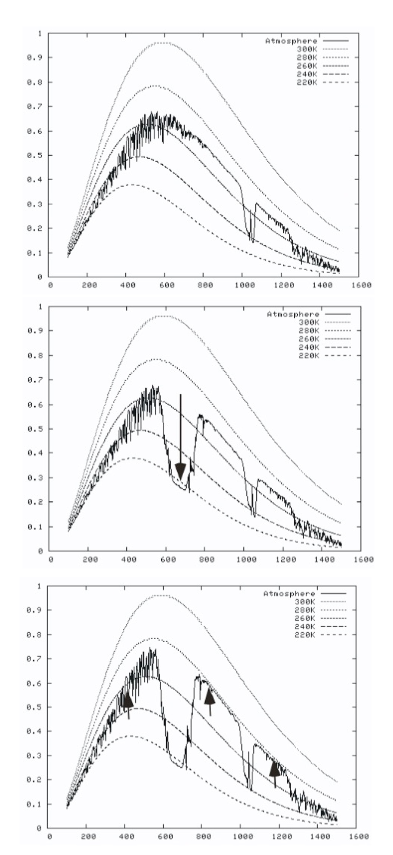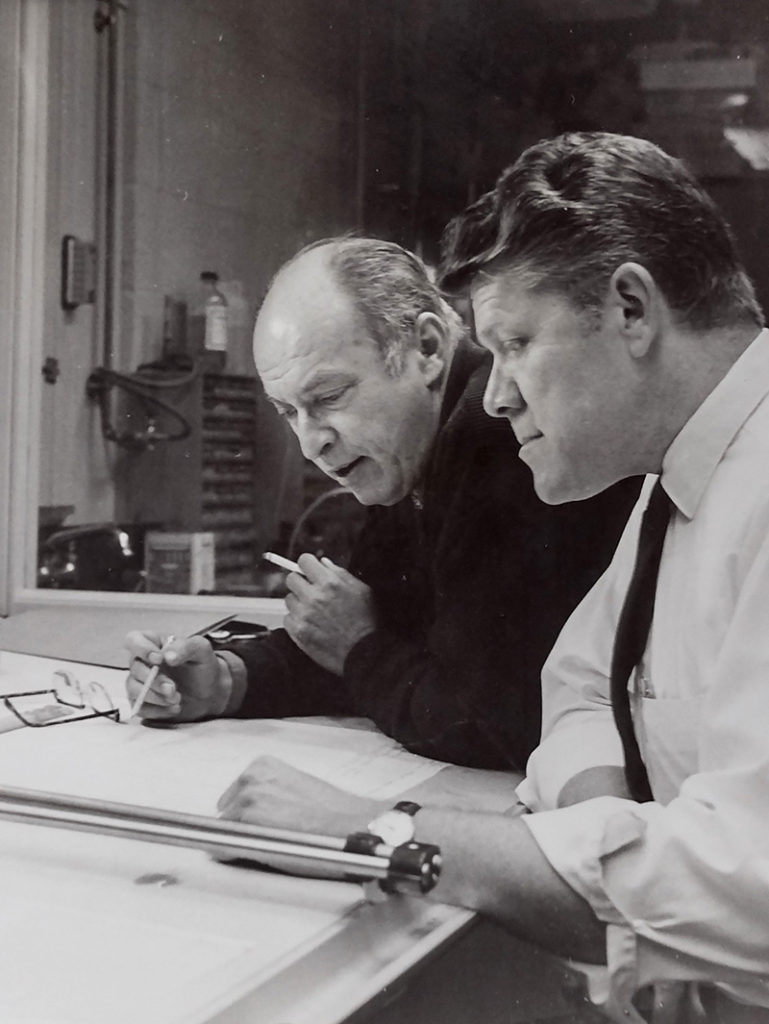In my novel The Stone Loves the World, the character Vernon is based on my father, with some differences. For example, whereas Vernon worked at RAND from 1956-58, my father spent those years teaching undergraduate physics at his alma mater, Wake Forest College. Unlike Vernon, my father never worked in nuclear physics or nuclear bomb design. Like Vernon, he spent the bulk of his career analyzing the interaction of ultraviolet light with the Earth’s upper atmosphere. He published papers with titles such as, “Solar Extreme Ultraviolet Photon Flux Measurements in the Upper Atmosphere of August 1961,” and “Diurnal Variation of the Atmosphere around 190 Kilometers Derived from Solar Extreme Ultraviolet Absorption Measurements,” and “Solar Ultraviolet Irradiance at 40 Kilometers in the Stratosphere.” He was known for his talent for building the spectrometers to be used in his flights, and for his extreme meticulousness in calibrating them in the lab beforehand.
Sadly, my father did not have an underground fallout shelter built off of our basement in which he could hermetically seal himself away from the world and listen in peace and quiet to his classical music. He would have loved that, though—so in the novel, I gave it to him. His name was Louis Alton Hall, and he died in 2006. Here he is in 1970 at the Air Force Cambridge Research Laboratories at Hanscom Field Air Force Base, with his boss, Hans Hinteregger:
My dad is the one with the gorgeous wavy hair that he failed to pass on to me. (Wait—maybe I’m really Hans Hinteregger’s son!?) Even though he worked for the Air Force, my father was always at pains to explain to people that his research had no military application. He often went further, saying that it had no discernible practical application of any kind—that it was “pure” research. I never knew whether this was strictly true. Since he disliked the military, I wondered if he preferred believing that nothing he did could possibly help them, even in a yet-to-be-discovered roundabout way. Whatever the reason, I grew up with the idea that my father sent up rockets and balloons to measure ultraviolet light, and that it was good to do this because more knowledge is always good, but it was, strictly speaking, “useless” knowledge. Somehow all that useless knowledge provided his family with a middle-class life and put his children through college.
This year, on October 5, the Royal Swedish Academy of Sciences announced that the Nobel Prize in Physics was going to Syukuro Manabe, Klaus Hasselmann, and Giorgio Parisi, “for groundbreaking contributions to our understanding of complex physical systems.” Half of the award was shared equally by Manabe and Hasselmann, “for the physical modelling of Earth’s climate, quantifying variability and reliably predicting global warming.” I didn’t pay much attention to the announcement because, although I care about global warming, I haven’t studied physics since highschool.
On October 19, I got an email from an old colleague of my father’s, informing me that some of the work he (my father) did was included in the paper the Swedish Academy put out to accompany the award, “Scientific Background on the Nobel Prize in Physics 2021.” (This colleague will remain nameless, because I haven’t asked permission to identify them; also, I don’t understand the science very well, and I don’t want them to be associated with the general comments I’m posting here, which might contain misapprehensions.) The relevant section of the Academy’s paper is titled “Climate Physics: Background and History” and the relevant sentence is, “Figure 3 shows the results of the Moderate Resolution Atmospheric Transmission (MODTRAN) model, which simulates the emission and absorption of infrared radiation in the Earth’s atmosphere.” Here’s the figure referred to, along with its lengthy caption:

FIG. 3. The vertical axis is the total upward infrared energy flux in Wm−2 and the horizontal axis is wavenumber in cm−1. The smooth curves are theoretical emission spectra of blackbodies at different temperatures. The jagged lines are spectra of infrared light at the top of the atmosphere looking down on Earth. The model demonstrates the effect of wavelength-selective greenhouse gases on Earth’s outgoing IR energy flux. Here we take an extreme version of increasing atmospheric CO2 from 0 ppm (top panel) to 1000 ppm (bottom two panels). In the top panel there is no CO2 in the atmosphere and the outgoing steady state flux is 249 Wm−2. In the middle panel, 1000 ppm CO2 is distributed through the atmosphere and the absorption “bite” (highlighted by the downward pointing black arrow) reduces the instantaneous flux escaping from the top of the atmosphere to 223 Wm−2. In the lowest panel, in order to re-establish steady state with 249 Wm−2, the “wings” surrounding it (dominated by water vapor and highlighted with the upward black arrows) must radiate at a higher temperature, in consequence of which the surface temperature increases by 8.5 ◦C . Online models are available at http://climatemodels.uchicago.edu.
According to my father’s colleague, these graphs owe much to my father’s work. Although they depict a range in the infrared, whereas my father’s work was in the extreme ultraviolet, the indebtedness to him, as I understand it, stems from the much finer level of detail now attainable in analyzing solar irradiance and atmospheric absorption that his work helped make possible. That level of detail, among other things, allows researchers to determine more precisely the amounts of various compounds, including greenhouse gases, in the Earth’s atmosphere.
For years I’ve tended to think of physicists and astronomers as falling into two camps, the Brahes and the Keplers. The Brahes are the meticulous measurers, the persnickety instrument-improvers, the patient compilers of ever better data. The Keplers are the ponderers, the pencil-chewers and paper-crumplers, the fashioners of new theories. The Keplers are the famous ones. But Johannes Kepler could never have formulated his three laws of planetary motion if he hadn’t had access to the unprecedentedly accurate data compiled over decades by his older colleague, Tycho Brahe. My father was a Brahe. And maybe the reason he never talked about his work to his children is that he knew that a Brahe’s work is tedious to describe. Its glory lies precisely in those numbing reams, or maybe realms, of particulars.
I’ve kept his published papers, and since his death I’ve read or skimmed all of them. It pains me that I don’t understand most of the technical details. One of my regrets is that I didn’t try—at some point during my twenties, when my science background was fresher in my mind—to overcome his reluctance to talk about his publications. After all, they record his most dedicated and deep thinking over forty years. In a way, they’re his fallout shelter, where he lives on in peace and quiet, surrounded by thick walls of home-built data. More than that, they represent a body of knowledge that only he, of all the people in the world, was qualified to present. When I try to read them it feels like I’ve uncovered a trove of his letters, perhaps an insight into his carefully guarded personality, but the handwriting is indecipherable.
Oh, well. I’ll take his colleague’s word for it, that he formed a part of the pyramid whose apex has just been recognized by the Nobel Committee for its contribution to understanding the mechanics of global warming. Part of me would like to be able to say to him, “Hey look, Dad! Useful knowledge, after all.” Another part of me, the part convinced that humans will never do anything to mitigate the climate catastrophe we’re causing, might instead say, “On second thought, Dad, how are we defining ‘useful,’ here?” That second question, in its desire to perform a semantic calibration, would have appealed to him. So, too, its ruefulness. He always preferred being clear-eyed to being happy.

A beautiful meditation.
Very nice.
Wow.